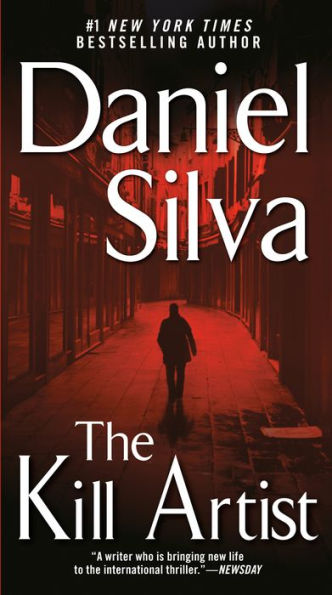In this week’s mystery roundup we get reacquainted with the delightful Gabriel Allon, lose track of the irascible Harry Hole, and follow Quinn Colson into a spider’s nest in the Deep South. The Heist, by Daniel Silva Fans of Silva will be delighted to discover that he’s done it again—each novel in his stylish Gabriel […]
From the #1 New York Times bestselling author of The Other Woman comes the first novel in the thrilling series featuring legendary assassin Gabriel Allon.
Immersed in the quiet, meticulous life of an art restorer, former Israeli intelligence operative Gabriel Allon keeps his past well behind him. But now he is being called back into the game—and teamed with an agent who hides behind her own mask...as a beautiful fashion model.
Their target: a cunning terrorist on one last killing spree, a Palestinian zealot who played a dark part in Gabriel’s past. And what begins as a manhunt turns into a globe-spanning duel fueled by both political intrigue and deep personal passions...
1100360807
Immersed in the quiet, meticulous life of an art restorer, former Israeli intelligence operative Gabriel Allon keeps his past well behind him. But now he is being called back into the game—and teamed with an agent who hides behind her own mask...as a beautiful fashion model.
Their target: a cunning terrorist on one last killing spree, a Palestinian zealot who played a dark part in Gabriel’s past. And what begins as a manhunt turns into a globe-spanning duel fueled by both political intrigue and deep personal passions...
The Kill Artist (Gabriel Allon Series #1)
From the #1 New York Times bestselling author of The Other Woman comes the first novel in the thrilling series featuring legendary assassin Gabriel Allon.
Immersed in the quiet, meticulous life of an art restorer, former Israeli intelligence operative Gabriel Allon keeps his past well behind him. But now he is being called back into the game—and teamed with an agent who hides behind her own mask...as a beautiful fashion model.
Their target: a cunning terrorist on one last killing spree, a Palestinian zealot who played a dark part in Gabriel’s past. And what begins as a manhunt turns into a globe-spanning duel fueled by both political intrigue and deep personal passions...
Immersed in the quiet, meticulous life of an art restorer, former Israeli intelligence operative Gabriel Allon keeps his past well behind him. But now he is being called back into the game—and teamed with an agent who hides behind her own mask...as a beautiful fashion model.
Their target: a cunning terrorist on one last killing spree, a Palestinian zealot who played a dark part in Gabriel’s past. And what begins as a manhunt turns into a globe-spanning duel fueled by both political intrigue and deep personal passions...
2.99
In Stock
5
1

The Kill Artist (Gabriel Allon Series #1)
512
The Kill Artist (Gabriel Allon Series #1)
512Related collections and offers
2.99
In Stock


Product Details
| ISBN-13: | 9781440627903 |
|---|---|
| Publisher: | Penguin Publishing Group |
| Publication date: | 04/06/2004 |
| Series: | Gabriel Allon Series |
| Sold by: | Penguin Group |
| Format: | eBook |
| Pages: | 512 |
| Sales rank: | 4,094 |
| File size: | 576 KB |
About the Author

What People are Saying About This
From the B&N Reads Blog
